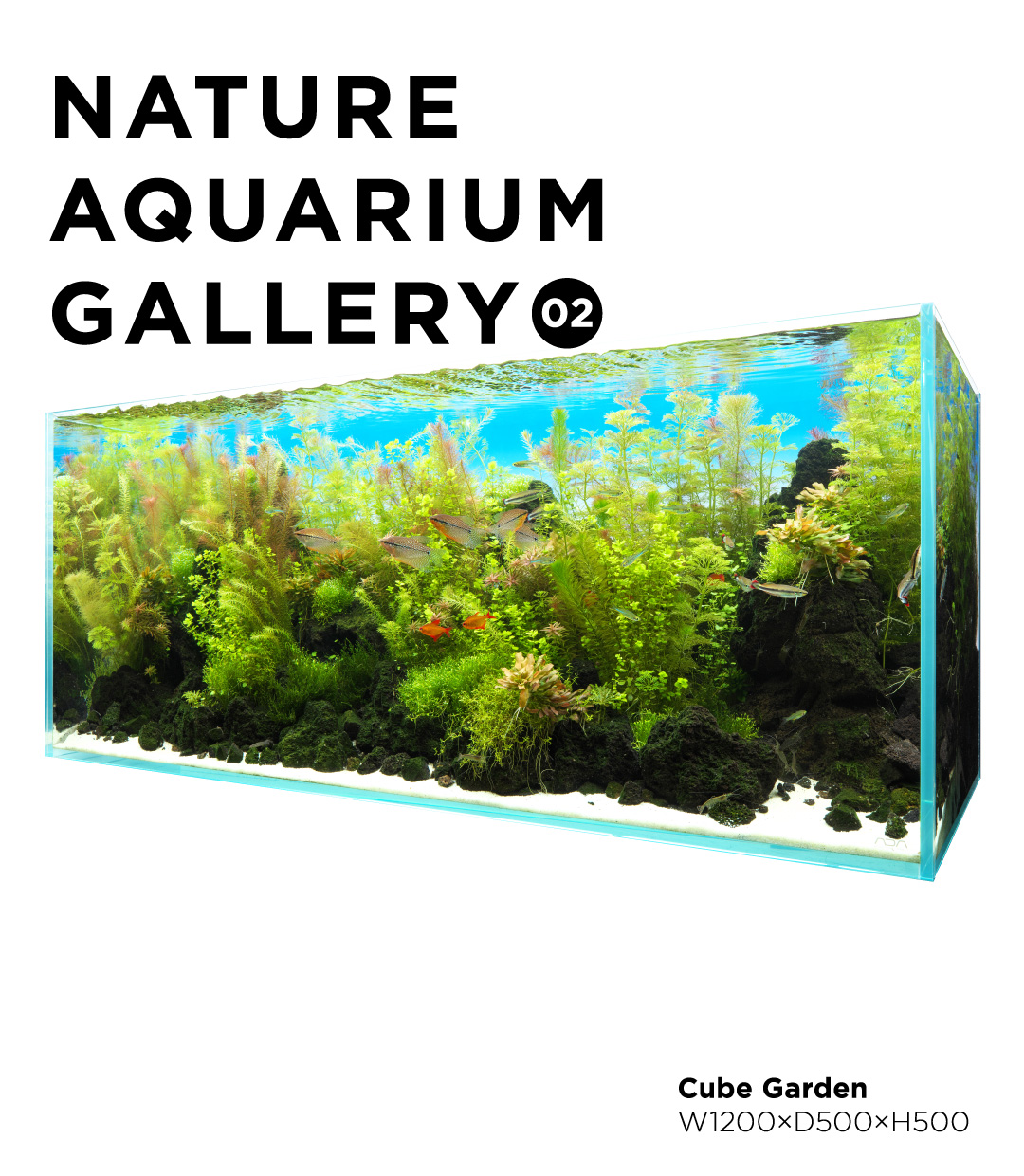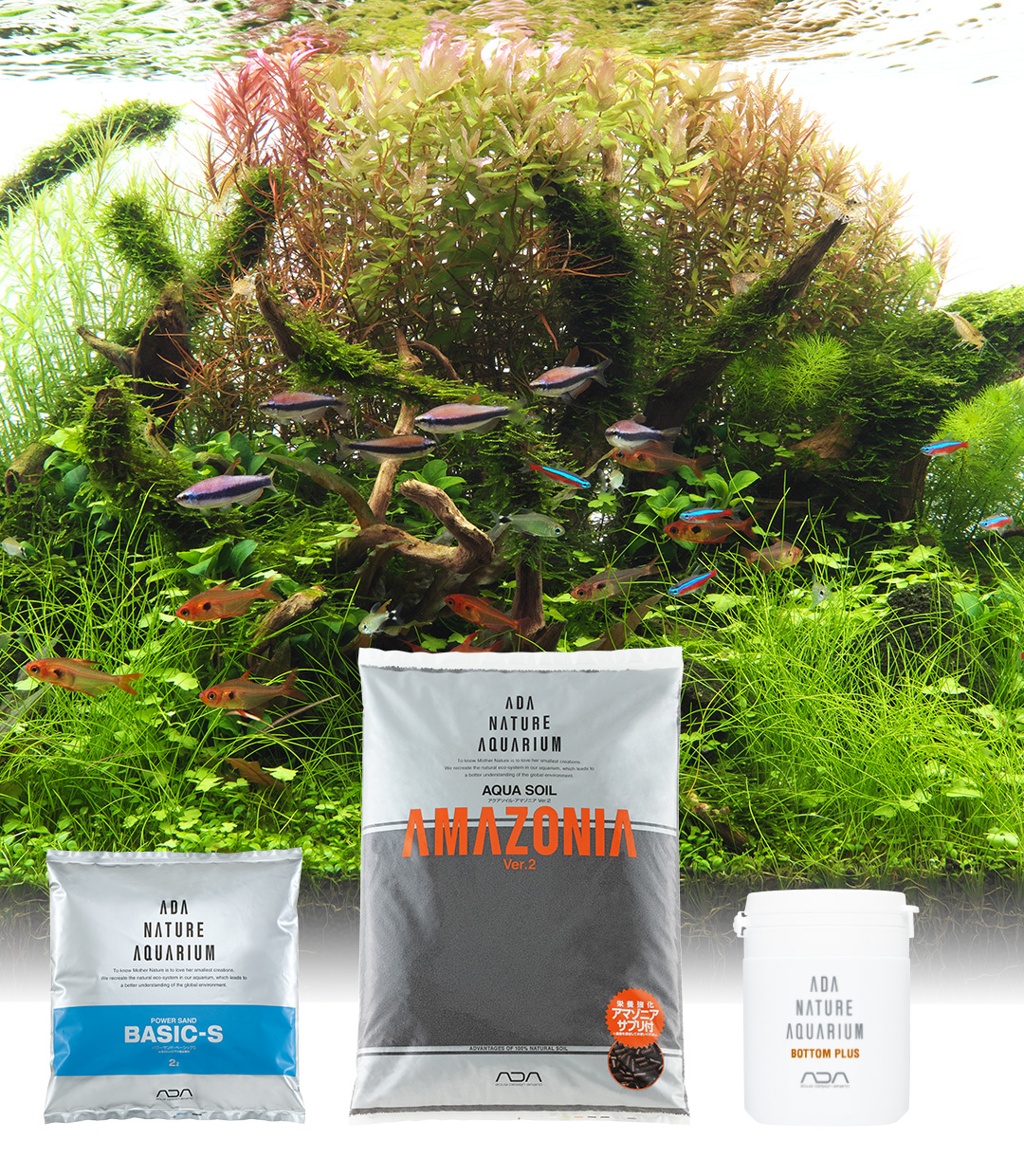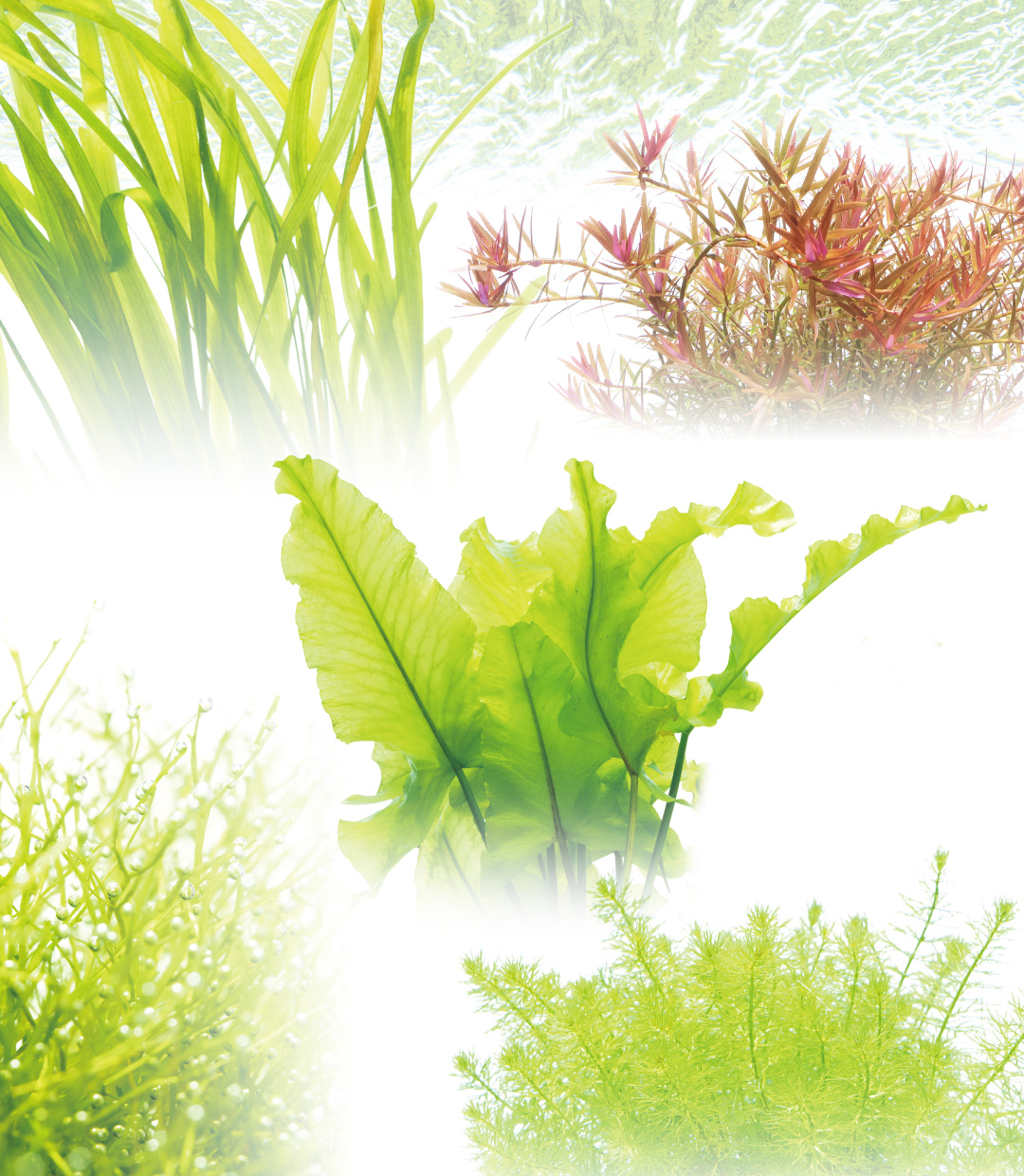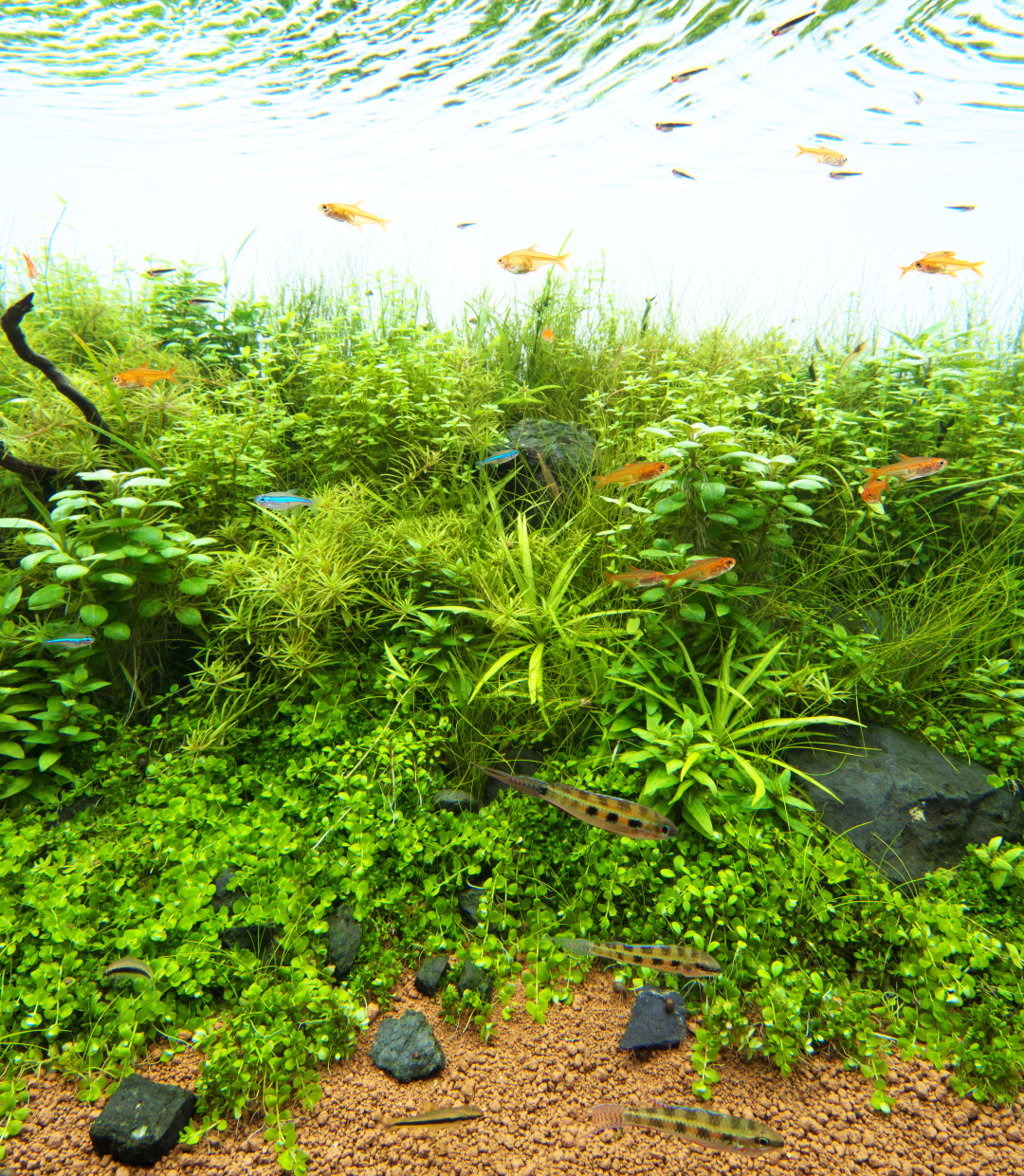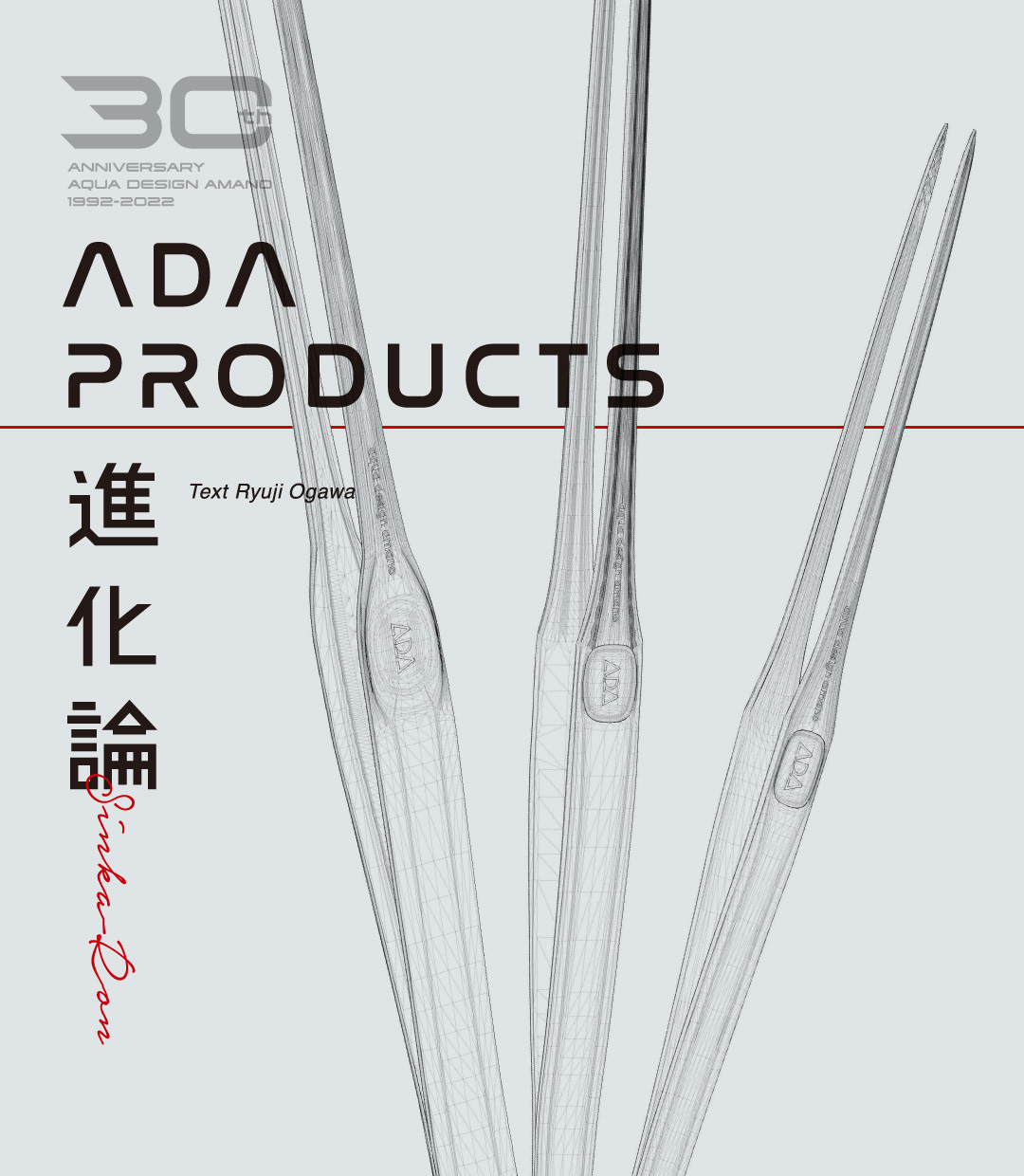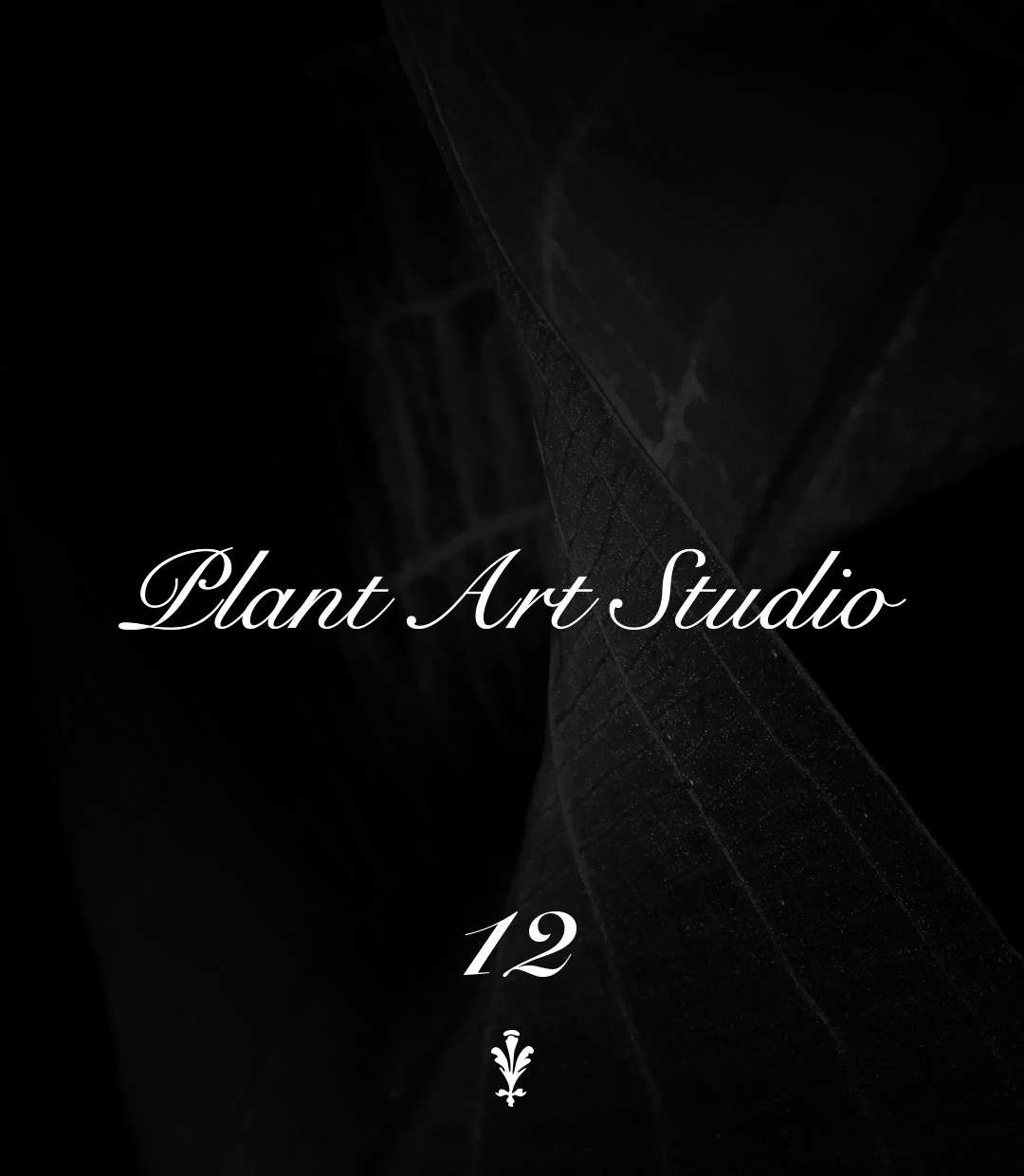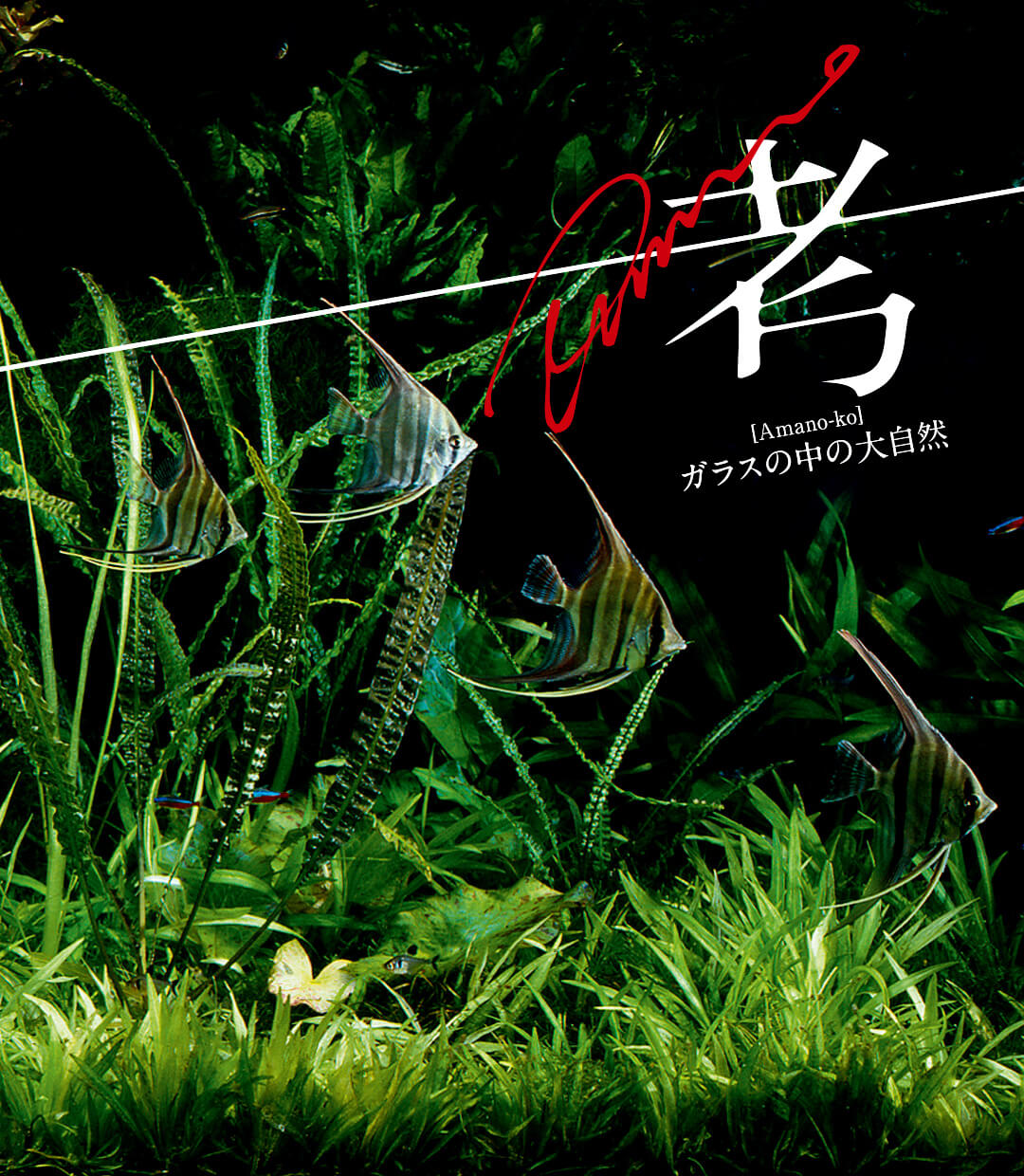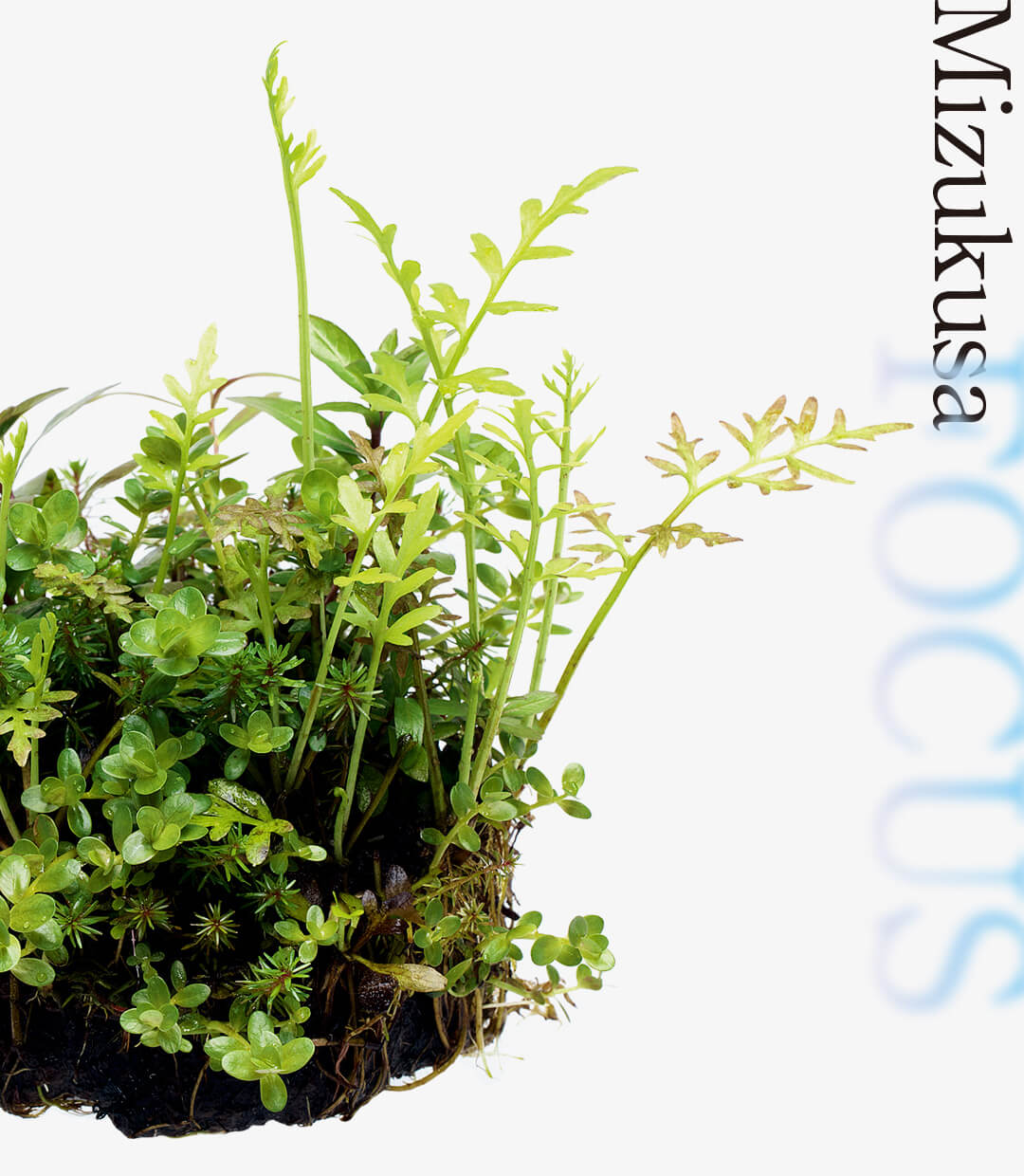THE CHARM OF SUBMERGED LEAVES 「Grassy aquascape formed by small and delicate submerged leaves 」
[Looking around the feet]
There is magnificent, untouched nature, such as deep forests and tropical rainforests. On the other hand, small patches of grass growing in open spaces or on the sides of roads are also nature. Since the concept of this aquascape is based on the familiar nature we see every day, I did not create a powerful composition, nor did I plant plants that clearly separate the mid-ground from the background. The slender driftwood glimpsed represents dead stems mixed with thriving vegetation, and is an element that reminds the passage of time. In addition, trimming was kept to a minimum and priority was given to the growth of the aquatic plants. As a result, the aquatic plants cover most of the stones and driftwood, giving them the strength of life.
There is magnificent, untouched nature, such as deep forests and tropical rainforests. On the other hand, small patches of grass growing in open spaces or on the sides of roads are also nature. Since the concept of this aquascape is based on the familiar nature we see every day, I did not create a powerful composition, nor did I plant plants that clearly separate the mid-ground from the background. The slender driftwood glimpsed represents dead stems mixed with thriving vegetation, and is an element that reminds the passage of time. In addition, trimming was kept to a minimum and priority was given to the growth of the aquatic plants. As a result, the aquatic plants cover most of the stones and driftwood, giving them the strength of life.
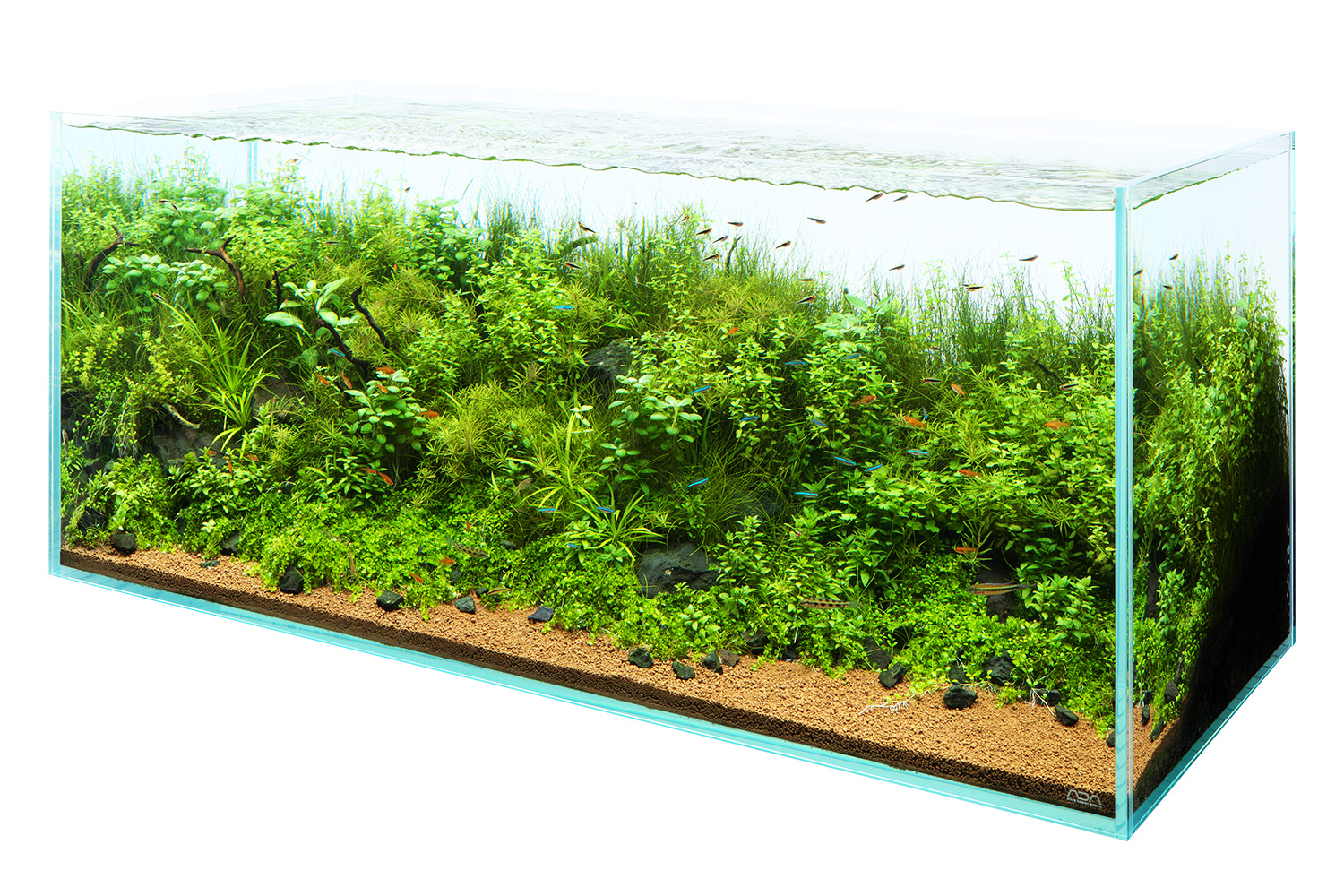
DATA
Shooting date: December 8, 2021 (ADA)
Creator: Daisuke Inoue (Layout creation)
Aquarium: Cube Garden W120 x D50 x H50 (cm)
Lighting: Solar RGB x 2, turned on 8.5 hours per day
Filter: Super Jet Filter ES-1200 (Bio Rio G)
Material: Yamaya Stone, Branch Wood
Substrate: Aqua Soil-Amazonia Ver.2, Power Sand Advance M, Bacter 100, Clear Super, Tourmaline BC, Tropical River Soil
CO2: Pollen Glass Beetle 40Ø, 5 bubbles per second via CO2 Beetle Counter (using Tower)
Aeration: 15.5 hours after the light is turned off using Lily Pipe P-6
Additives: Brighty K, Green Brighty Mineral, Green Brighty Iron, Green Brighty Nitrogen
Water change: 1/3 once a week
Water quality: Temperature: 25°C, pH: 6.4 TH: 50 mg/L
Aquatic Plants :
BIO Mizukusa no Mori Micranthemum sp.
BIO Mizukusa no Mori Scrophulariaceae sp.
BIO Mizukusa no Mori Staurogyne repens
BIO Mizukusa no Mori Eleocharis acicularis
Helanthium bolivianum ‘Quadricostatus’
Hedyotis salzmannii
Lobelia cardinalis
Fish and Invertebrates:
Hyphessobrycon amandae
Tucanoichthys tucano
Paracheirodon simulans
Dicrossus filamentosus
Otocinclus sp.
Canidina multidentata
Creating a boundary between plants and cosmetic sand
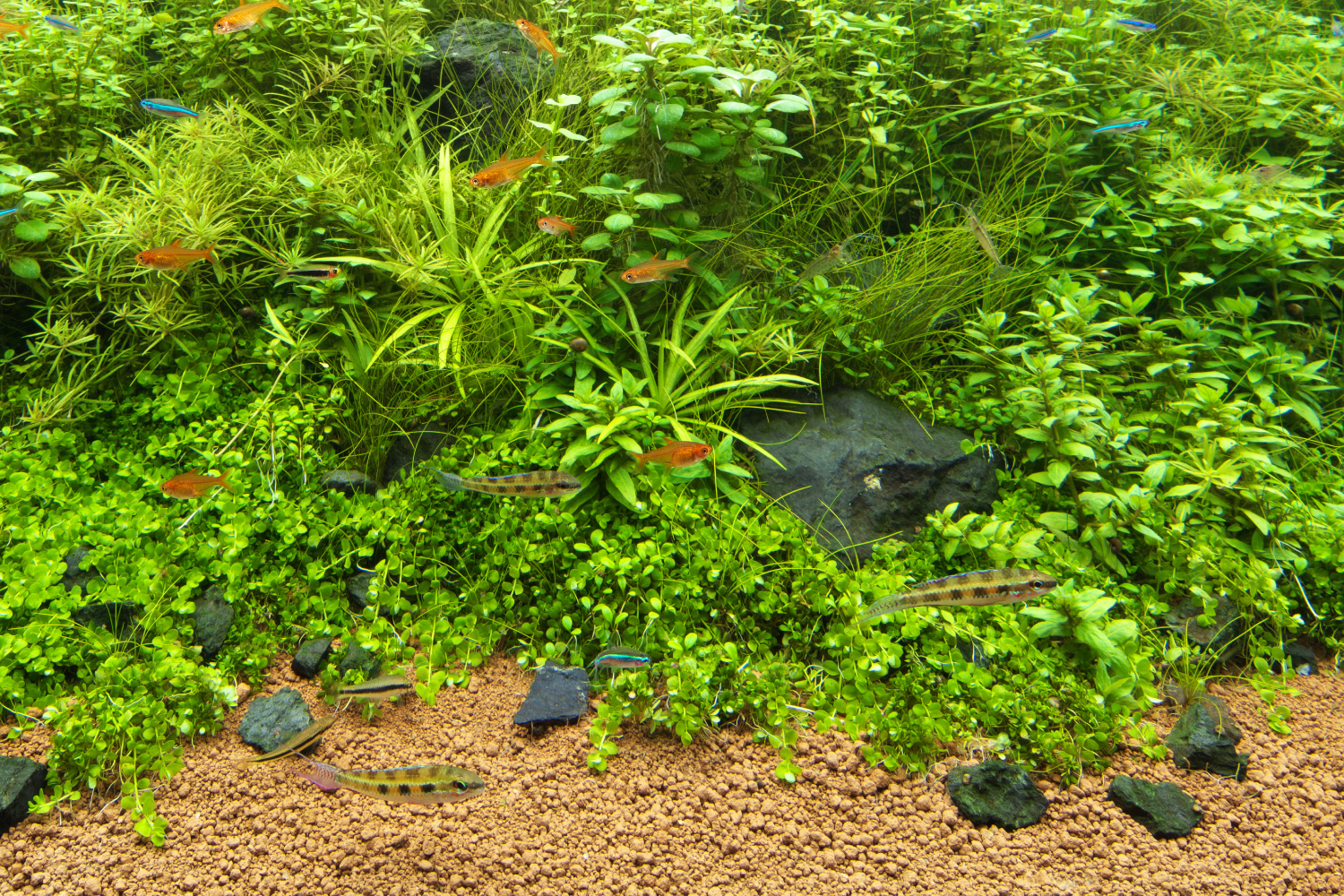
The substrate was laid out to create a boundary between nature and human being. The creeping Micranthemum sp. thrives as if to swallow the boundary line, giving us a hint that the cluster would further thrive over time.
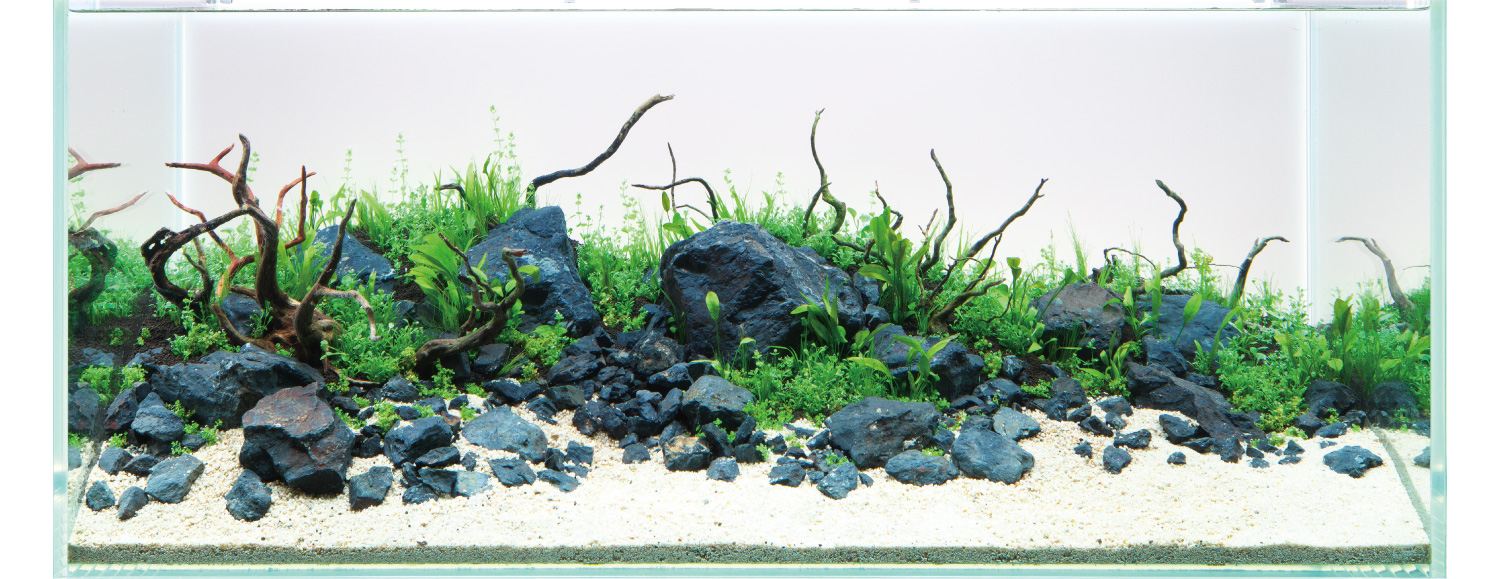
The presence of aquatic plants is enhanced by the simple compositional framework. White cosmetic sand was used at the time of planting, but was replaced with Tropical River Soil to create a more familiar natural feel.
Random and flexible planting
In order to strengthen the wildness of the plant cluster, species that showed differences in shapes of the submerged leaves were selected. In addition, I did not establish an exact planting area for each species, but rather planted randomly and with a high degree of flexibility.
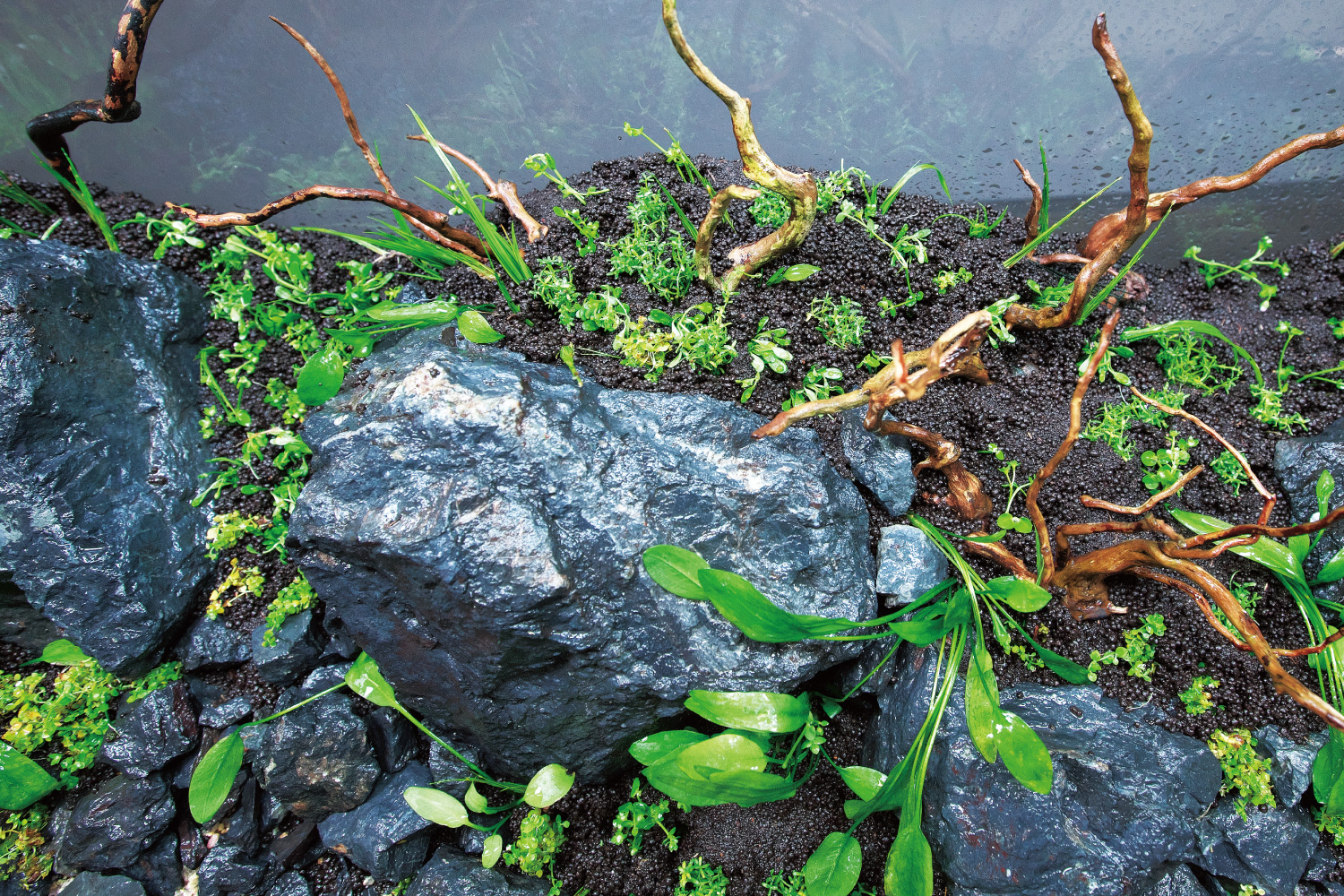
Loving the individuality of aquatic plants. And giving life to the aquascape.
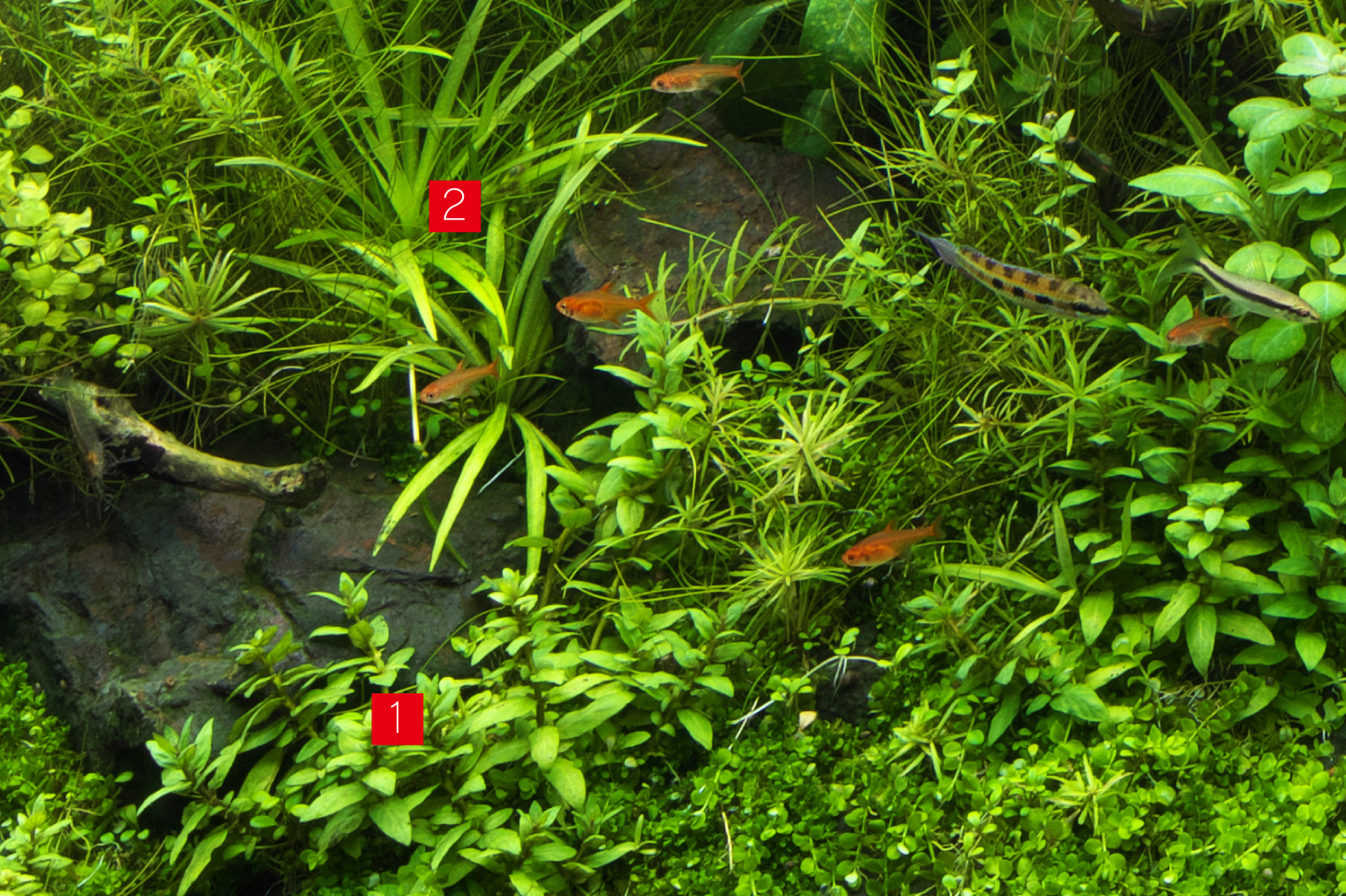
1. Staurogyne repens
The heterogeneous foliage and short stature of the aquatic plant were used to create a sharpness in the foreground that would otherwise have been monotonous.
2. Helanthium bolivianum ‘Quadricostatus’
The prominent, bursting, radiating leaves give the impression of abundant energy and add an accent to the mid-ground.
The heterogeneous foliage and short stature of the aquatic plant were used to create a sharpness in the foreground that would otherwise have been monotonous.
2. Helanthium bolivianum ‘Quadricostatus’
The prominent, bursting, radiating leaves give the impression of abundant energy and add an accent to the mid-ground.
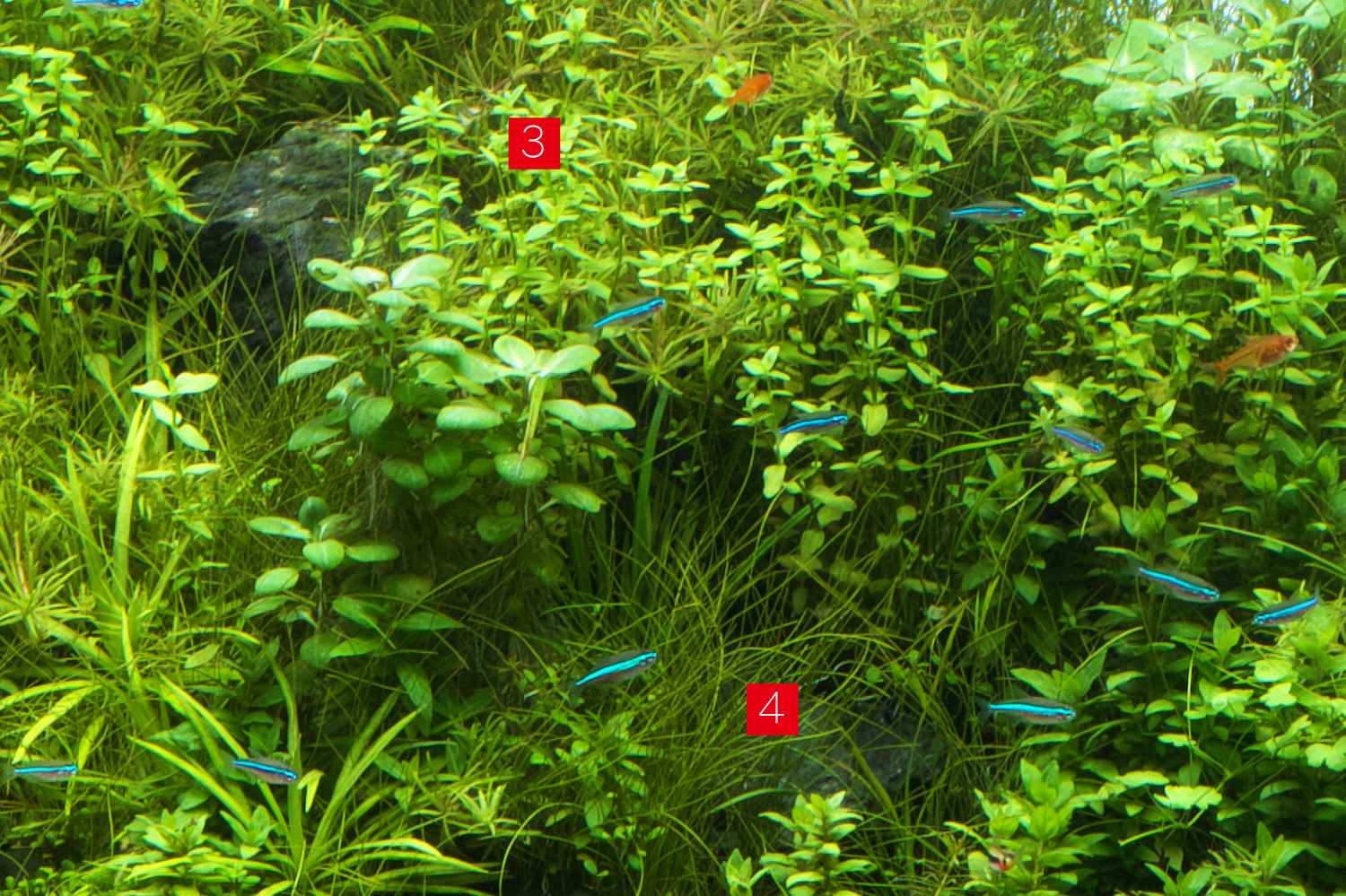
3. Hedyotis salzmannii
The light green foliage and wide internodes reduce the sense of density, giving a lightness to the overgrown clusters.
4. Eleocharis acicularis
It adds suppleness to the bushes, and the way it flutters in the water flow enhances the sense of nature.
The light green foliage and wide internodes reduce the sense of density, giving a lightness to the overgrown clusters.
4. Eleocharis acicularis
It adds suppleness to the bushes, and the way it flutters in the water flow enhances the sense of nature.
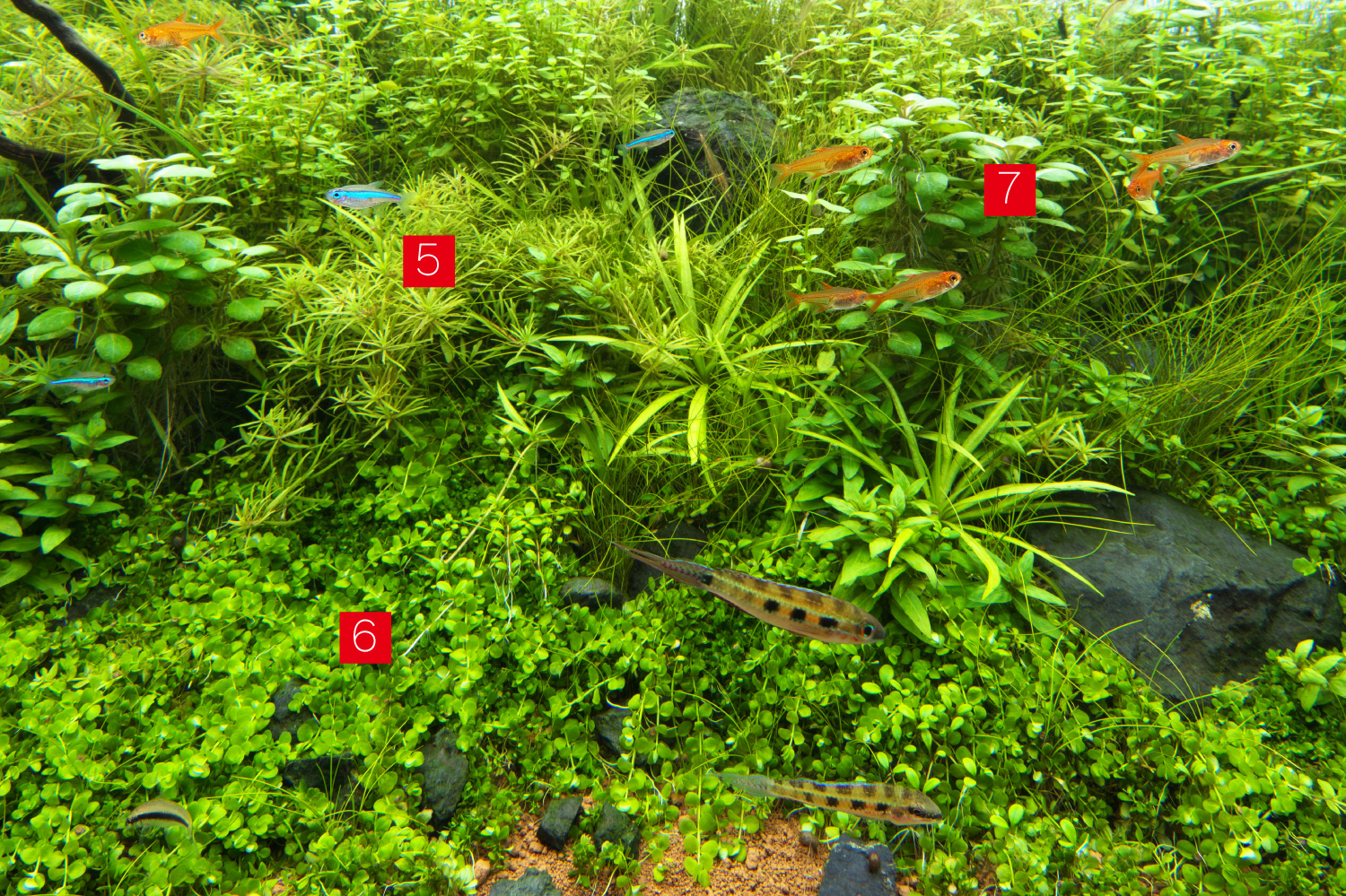
5. Scrophulariaceae sp.
It grows like weeping, and delicate overlapping leaves make it possible to form denser bushes.
6. Micranthemum sp.
It invaded the soil area and led to the representation of pioneer plants that seemed to be expanding their new distribution area.
7. Lobelia cardinalis
Large, round, dark green leaves accentuate the fresh, fineleafed aquatic plants.
It grows like weeping, and delicate overlapping leaves make it possible to form denser bushes.
6. Micranthemum sp.
It invaded the soil area and led to the representation of pioneer plants that seemed to be expanding their new distribution area.
7. Lobelia cardinalis
Large, round, dark green leaves accentuate the fresh, fineleafed aquatic plants.
